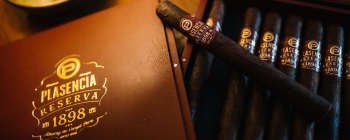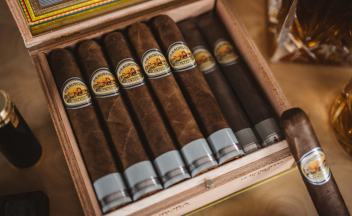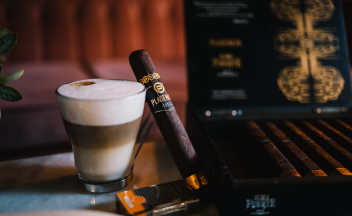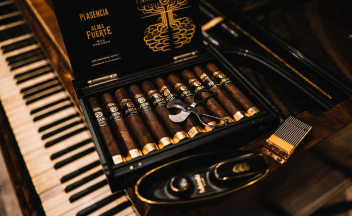
How to Spot a Fake Cuban Cigar
There is little more pleasurable than an authentic Cuban cigar. And little more frustrating than sparking up an imitation Cuban cigar. It looks okay at first glance. It smells a little off. And oh yeah, by the pre-draw you’ll know it’s fake.
How to spot a fake Cuban cigar is incredibly important, especially if you are new to Cuban cigars. Cuba’s cigar industry has developed measures to fight off counterfeiting and there are many clues you can use, before sparking up. This guide shows you all the methods you need to determine the authenticity of Cuban cigars, and rest assured you are smoking the real deal.
How to Spot a Fake Cuban
Cuban cigars are prime targets for counterfeiters thanks to their prestige, price and popularity. Counterfeiters will typically make cigars that look similar to a well known Cuban cigar. They will also imitate some of the unique features, like stamps, boxes, seals and stickers.
If you only look at the warranty stamp, for example, you can be deceived. You need to inspect many different features. Only an authentic Cuban cigar will have them all.
Cuban Government’s Warranty Stamp
The warranty stamp or “Sello de garantia nacional de procedencia” was first introduced in 1889 when Cuba was a Spanish colony. The independent Cuban government established a new warranty stamp in 1912. The most recent warranty label is reminiscent of these early stamps yet features modern anti-counterfeiting measures adopted in 2009, including:
- Hologram
- Synthetic paper
- Anti-removal and anti-copy protection
- Unique barcode
- Microdot00
All warranty seals feature green ink of varying shades on a white background. Each stamp should be either 7.20” x 2.52", 3.82” x 1.34", or 2.36” x 0.83" in size depending on the product type. Whether Punch cigars or other Cuban classics, the stamps are currently placed on the left side of boxes or the outer packaging’s opening.
The Boxes
Cuban cigar boxes give several clues as to whether or not the cigars might be authentic. Various paper coverings, seals, and decorations can be used to dress authentic Cuban cigar boxes, so be on the lookout for inconsistencies in color or design quality.
Full boxes contain cedar sheets with special curved openings at one corner placed between rows of cigars. The openings on sheets in counterfeit boxes are often cut straight, if at all. Boxes should also feature cigars of uniform size. If that box of Montecristo cigars seems an odd fit or has a clear plastic or glass lid, they are sure to be fake.
The Heat Stamps
The bottom of every Cuban cigar box features heat-stamped markings that signify the authenticity of the cigars contained within. These stamps are sometimes referred to as the “irons” after the special branding irons used to create the markings. Since October of 1994, the bottom of every box of long-filler Cuban cigars has the following heat stamps:
- “Habanos s.a.” (Cuba’s official exporter of cigars worldwide)
- “Hecho en Cuba” (“Made in Cuba”)
- “Totalmente a mano” (“Totally by hand”)
Short filler Cuban cigars will also include an additional “TC” (Triple Corta or short filler) heat stamp on the box.
The Habanos Sticker
No matter the cigar type, every box of authentic handmade cigars that leaves Cuba features a “Denomination of origin” sticker. The sticker includes a stylized tobacco leaf, a red and orange “Habanos,” and the words “Denominacion de origen protegida” running along the lower edge.
The sticker is usually placed diagonally across the top corner of the box. This signifies that the cigars are of the highest quality and have passed rigorous regulations set forth by the governing body of Protected Denomination of Origin Habanos.
The Bands
Cigar bands might look like the real deal, but always check the quality of the paper used and the level of detail in the band’s design. Some Cuban cigars, such as the elite Cohiba Behike 54, feature holographic images on the band as a defense against counterfeiting. Also, check to see that all the bands in a box line up perfectly, as expert banders or Anilladoras band real Cuban cigars.
Smoking the Cigar
The most advanced counterfeit cigars might not seem that bad of a smoke to the casual smoker, yet those familiar with Cuban cigars know nothing is like an authentic Cuban cigar. Smoking the cigars is a tried and true method for telling the difference between real and fake Cuban cigars. A Cuban cigar will have an unmistakable character, taste, and ash.
First examine the construction of the cigar. Veins and minor inconsistencies are to be expected on many authentic hand-rolled cigars, but hold an authentic cigar in hand and you can identify this as part of the craftsmanship. All the cigars in the box should be of uniform size, and each should have a triple cap. You can cut open a cigar to further examine the quality of the tobacco and craftsmanship.
Buy Authentic Cuban Cigars
There is no better way to relax than with an authentic Cuban cigar, but due diligence is required to ensure you are getting the real deal. So put what you have learned into action and find genuine Cuban cigars at your favorite online Cuban cigar shop today!
Apr 14, 2025
Last Modified: Apr 14, 2025

Table of Contents




